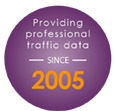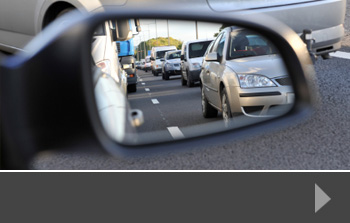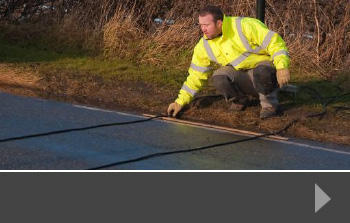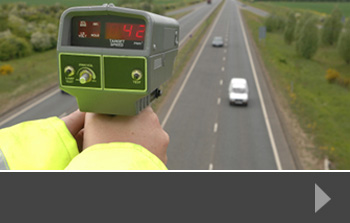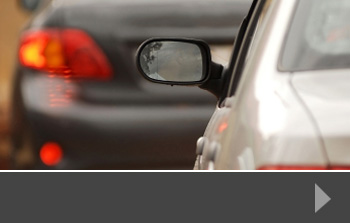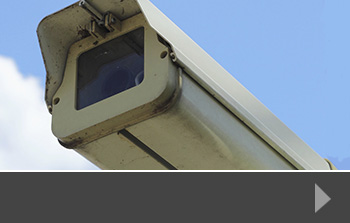Interview surveys of convicted hit-and-run drivers reveal poor understanding of law
A recently published report from the Department of Criminology at the University of Leicester has found that almost half of drivers convicted of hit-and-run offences say they would not have left the scene of the incident if they had known it was against the law to do so. The department chose to conduct an interview survey on the reasons why motorists hit and run.
Why choose this group to interview?
Public help is often crucial to identifying hit-and-run drivers, and with a significant proportion of collisions involving car accidents and pedestrians, it’s important to know more about why drivers choose to leave the scene. The research, which interviewed 695 people, discovered the following key responses:
• 50% did not think the accident was serious enough to report or they did not think that they had to report the accident (of this, 29% did not think it was serious enough and 21% were unaware of their responsibility to report an accident)
• 45% of those convicted would have stopped and reported the incident if they had known that they had committed an offence by leaving the scene of the accident
• 16 to 34 year olds were more likely to leave the scene of an accident because they were not insured, they had been drinking, were scared of the consequences or they ‘panicked’
• Older drivers (over 34 years old) were more likely to leave the scene if they did not think the accident was serious enough to report
• 6% of younger drivers (aged 16 -34) said that nothing would have made them stop and report the accident – they were determined to get away with the offence
The research found that over 50% of respondents were traced through pedestrian or driver witnesses.
When planning travel and public transport developments, all sorts of safety and traffic flow considerations are part of the process. However, it’s impossible to plan for incidents like hit-and-run offences, although these may be more likely to occur if there is poor provision for pedestrian and bike safety, for example, leading to people being forced to use the roads in an unsafe manner.
Commenting on the interim findings, Senior Lecturer Dr Matt Hopkins said: “As relatively little previous work in relation to ‘hit and run’ accidents has included any personal engagement with offenders, this research is fairly novel.
“Of course, these findings have to be treated with caution, but they do begin to highlight some of the reasons why drivers leave the scene of an accident. For a number of drivers there is clearly confusion about the legal requirement to report an accident, but importantly, some differences are observed between younger and older drivers that could be developed into preventative strategies. Further work is required to gain more detailed understanding of driver motivations to leave the scene from across a range of accident types. This is where the next stage of the research will focus.”
Interview surveys from RDS
At Road Data Services we conduct a wide range of surveys, including face-to-face interview surveys. These can help to compile a clear picture around a particular topic, giving personal and anecdotal data that can be used alongside more traditional data gathered in traffic surveys, speed surveys and parking surveys to ensure new developments are planned with traffic and pedestrian safety in mind.
To find out more about how we can help with your project, please contact us today.
A recent poll released by satellite navigation and traffic information company TomTom, shows that Belfast is the most congested city in the UK – and is looking likely to stay that way. This is despite a significant investment in road improvements in the city, with nearly 3km of new bus lanes, which was completed in 2013. TomTom’s traffic volume study shows that in rush-hour traffic, journeys take around 80% longer to complete than if roads are clear.
Travel options in a city like Belfast
Like all other major cities, people get around Belfast in cars, on buses, on trains, by cycle and on foot. However, the poll suggests that the average Belfast commuter still spent an extra 94 hours stuck in traffic over the past year. Other cities are also seeing an increase in congestion, with Bristol being the only city covered by the research where traffic problems had eased since the previous study.
Unsurprisingly, London came second behind Belfast for congestion levels, with journeys taking up to 67% longer in the evening rush hour. Other major cities like Manchester, Edinburgh and Birmingham have also seen increases in traffic problems, showing that there is still a need for travel options planning, covering both cars and all public transport facilities.
An interview survey can help planners and developers to find out exactly what problems drivers and other road and transport users face, informing future traffic planning decisions and ensuring that the best steps are taken to reduce congestion where possible.
Interview surveys from RDS
At Road Data Services, we specialise in collecting and delivering comprehensive survey data that provides accurate and relevant information to planners, developers, road safety bodies, local authorities and more. We use a variety of methods depending on what you need and the circumstances you are facing. Our interview surveys are carried out by a friendly team on a face-to-face basis with motorists, pedestrians and other road users. This gives you the opportunity to gather first-hand opinions on traffic flow, road use, parking, shopping and travel habits and much more. Covering both private and public transport, this is an excellent way to ensure that you have sought public opinion and use it to inform decision-making.
To find out more about how we can help, please contact us today.
Local and national newspapers are full of reports on the trouble or potential for trouble caused by new developments. All new building work, whether an out-of-town supermarket, new housing or urban redevelopment needs to facilitate the traffic flow, and that often starts with a traffic survey.
Why commission a traffic survey?
In order to plan for the best traffic flow around a new development, developers, town planners and consultants need to know what’s happening now. Accurate data from traffic flow monitoring, that describes existing route usage, journey times and types of vehicles using current routes will help decision makers to anticipate the effect that additional traffic levels and new access points may have.
Collecting traffic survey data
A professional survey company can collect data in a number of ways, including manual counts and video surveying. A complex development may need a survey that covers a number of different elements and requires a variety of collection methods. This allows planners to get a clear picture of what’s happening now. In addition, surveyors can collect opinions from the local community and from road users, providing direct feedback from personal experience.
The dangers of traffic ignorance
If you go ahead with development plans without seriously considering current and potential traffic implications, your plans are likely to be rejected at the first stage of the planning process, costing you time and money. It makes sense to have the traffic data information you need and use it to enhance your planning application.
Talk to Road Data Services today to find out more about how our range of traffic surveys and interview surveys can help your next development.

